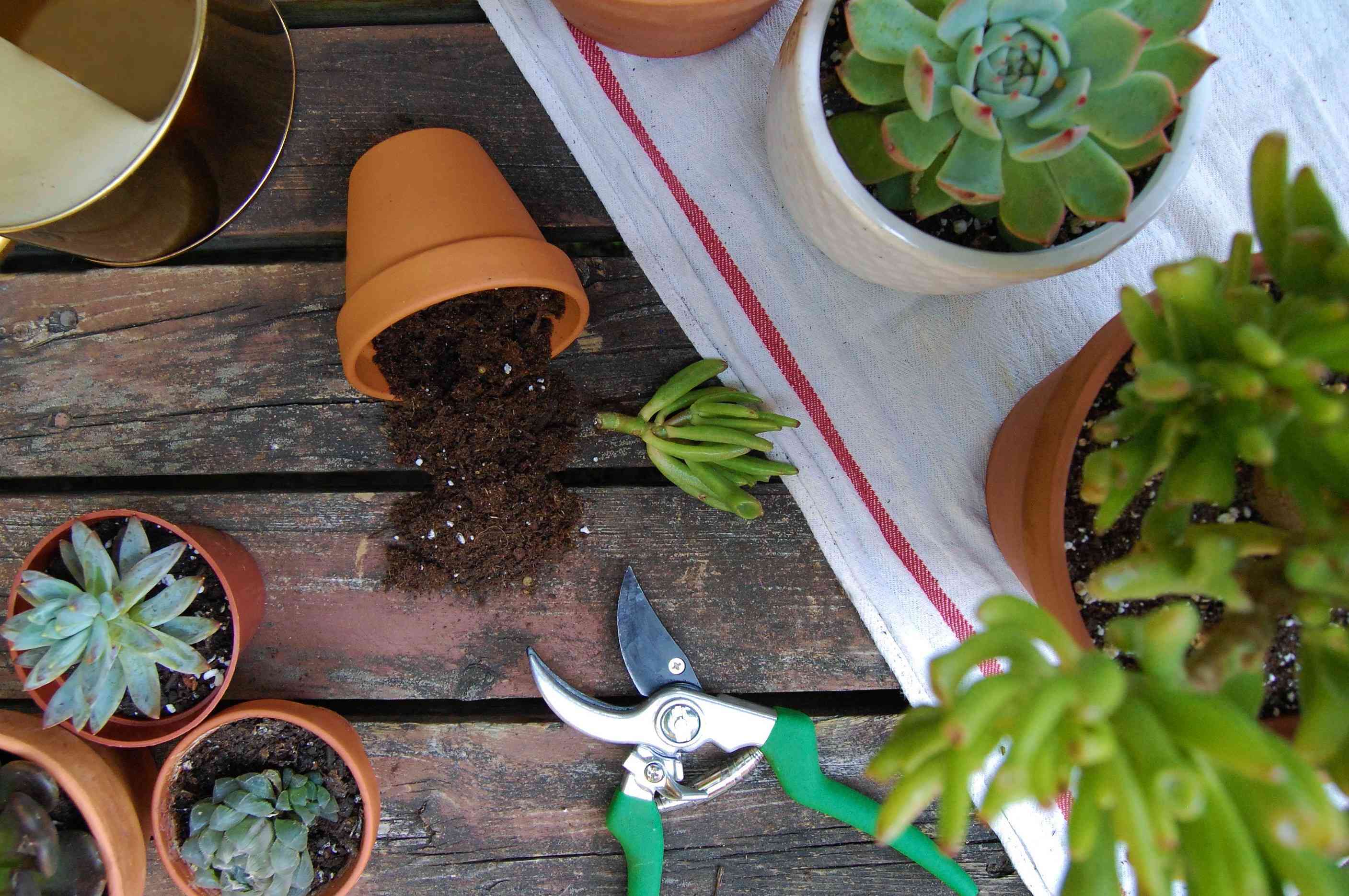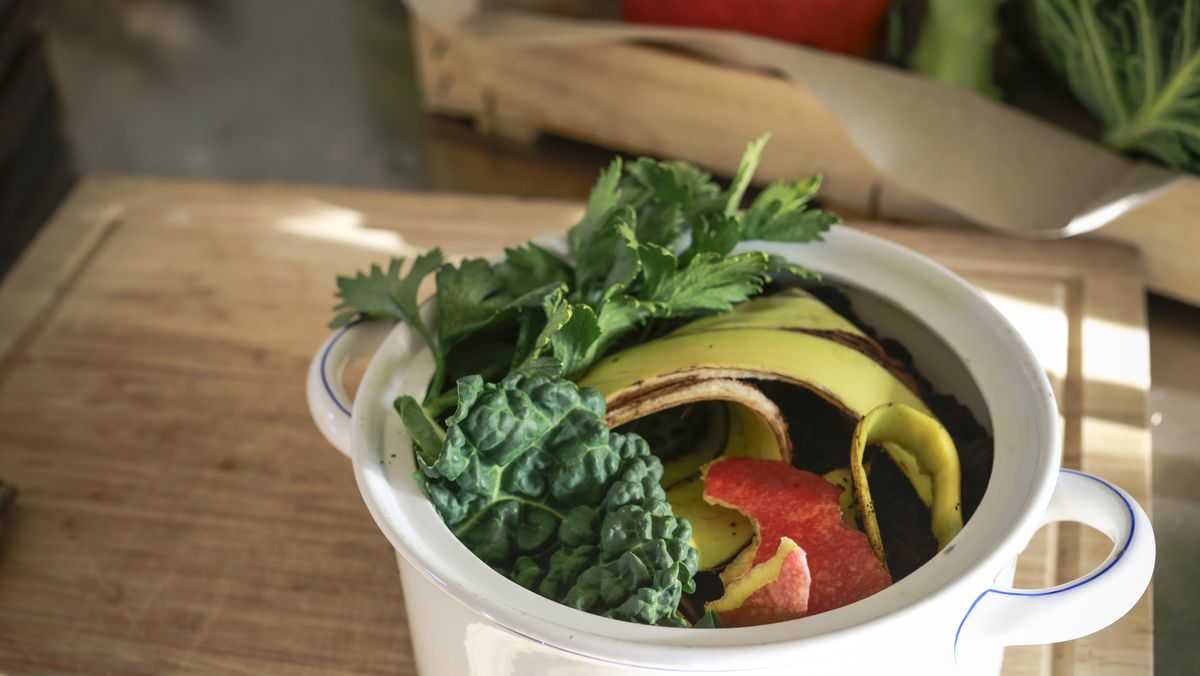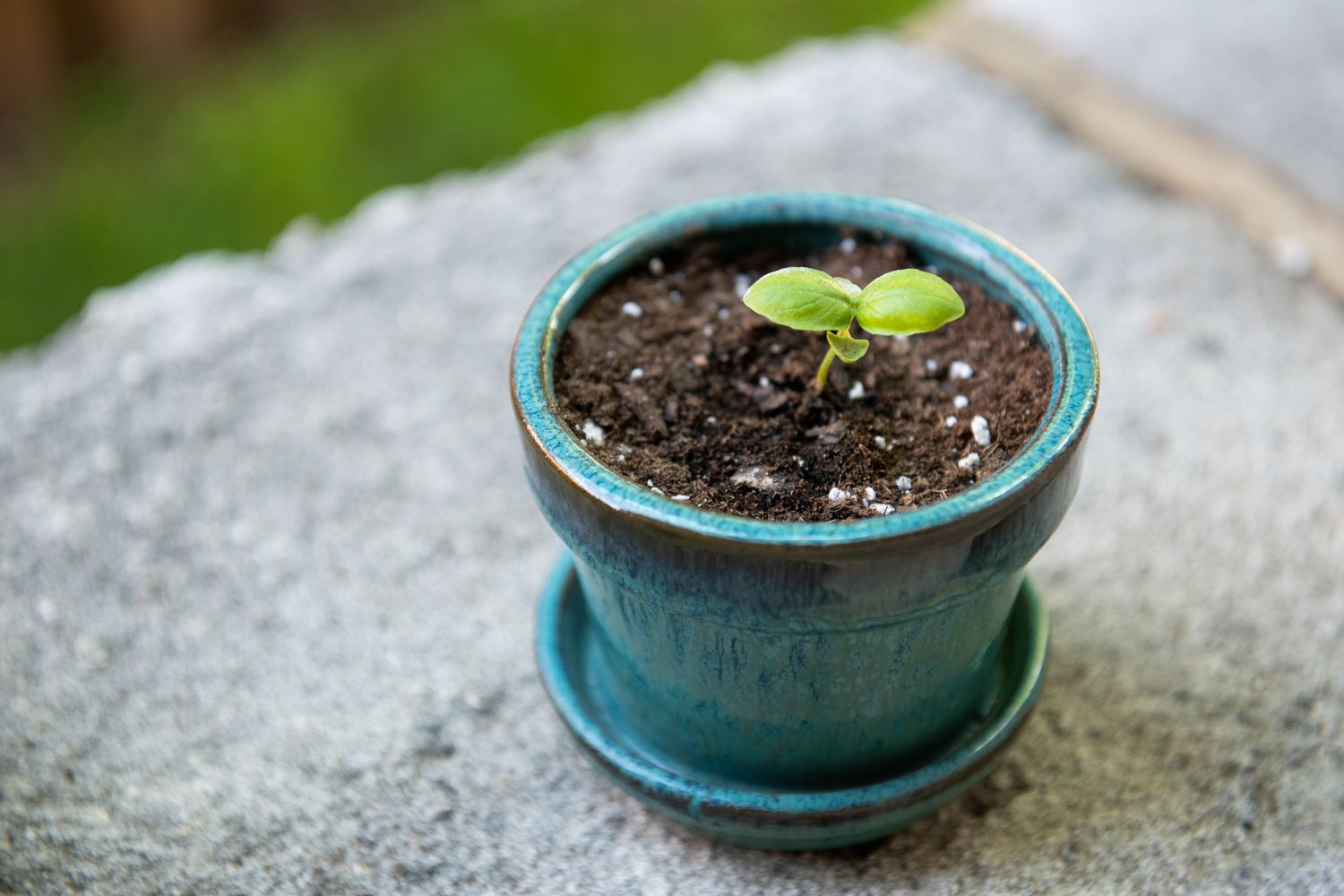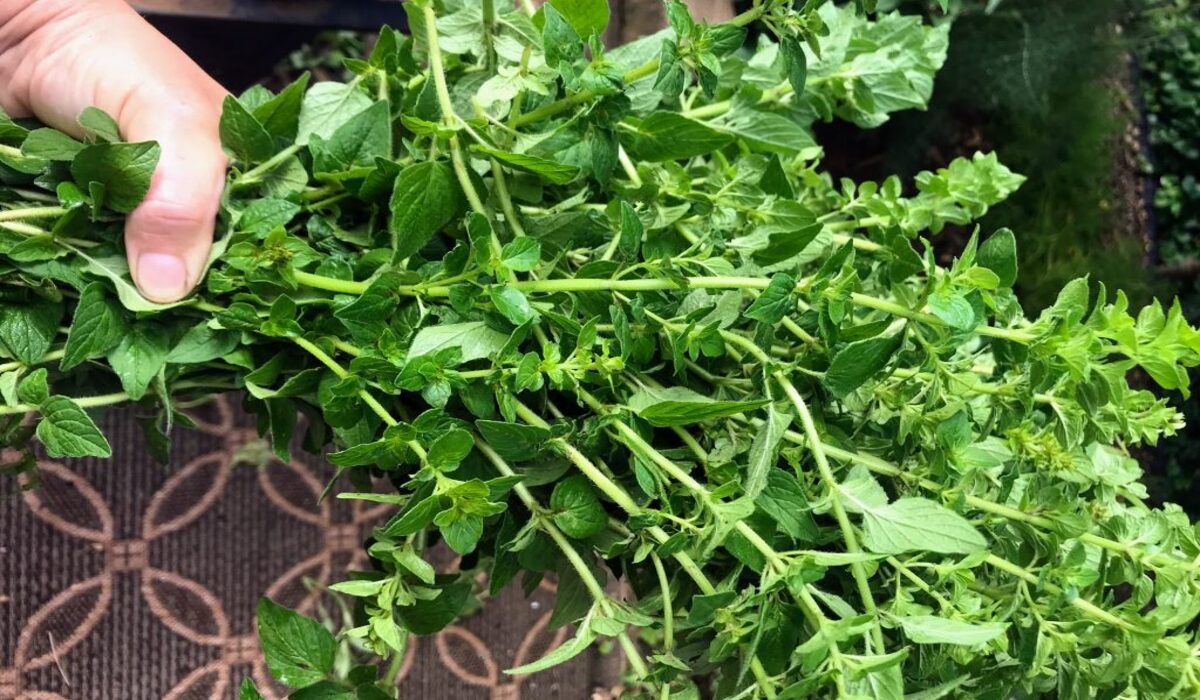Home>Types of Gardening>Ornamental Gardening>How To Replant Succulents Without Roots


Ornamental Gardening
How To Replant Succulents Without Roots
Published: December 24, 2023
Learn how to successfully replant succulents without roots in this comprehensive guide to ornamental gardening. Discover expert tips for healthy, thriving succulents.
(Many of the links in this article redirect to a specific reviewed product. Your purchase of these products through affiliate links helps to generate commission for Chicagolandgardening.com, at no extra cost. Learn more)
Table of Contents
**
Introduction
**
Welcome to the fascinating world of succulents! These unique plants have captured the hearts of gardening enthusiasts and nature lovers alike with their striking appearance and low-maintenance care requirements. In this comprehensive guide, we will delve into the art of replanting succulents without roots, a process that allows these resilient plants to thrive and flourish in new environments.
Succulents, with their diverse shapes, colors, and textures, have become increasingly popular for indoor and outdoor ornamental gardening. Their ability to store water in their fleshy leaves and stems enables them to survive in arid conditions, making them a perfect choice for those seeking resilient and visually captivating plant species.
As we embark on this journey, it is essential to understand the unique characteristics of succulents and the reasons why replanting them without roots can be beneficial. By gaining insight into the materials required and the step-by-step process of replanting succulents without roots, you will be equipped with the knowledge and confidence to embark on this rewarding horticultural endeavor.
Join me as we explore the world of succulents and unlock the secrets to successfully replanting these remarkable plants without roots. Whether you are a seasoned gardener or a novice enthusiast, this guide will provide you with valuable insights and practical techniques to ensure the health and vitality of your beloved succulents. Let's dive into the captivating realm of succulent gardening and discover the art of replanting these resilient beauties without roots.
**
Understanding Succulents
**
To effectively replant succulents without roots, it is crucial to comprehend the unique characteristics and adaptation mechanisms of these remarkable plants. Succulents belong to a diverse group of fleshy, water-retaining species that have evolved to thrive in arid and semi-arid regions across the globe. Their ability to store water in their leaves, stems, or roots allows them to endure prolonged periods of drought, making them exceptionally resilient in harsh environmental conditions.
One of the defining features of succulents is their striking diversity, encompassing a wide array of shapes, sizes, and textures. From the iconic rosettes of Echeveria to the spiky allure of Haworthia and the cascading elegance of Sedum, succulents offer an extensive palette of visual appeal for ornamental gardening. This diversity not only adds aesthetic charm to indoor and outdoor spaces but also presents a captivating opportunity for horticultural exploration and creativity.
Moreover, succulents have adapted to various climates and habitats, showcasing their versatility and adaptability. Whether thriving in rocky deserts, sandy coastal plains, or mountainous regions, these plants have evolved distinct features to optimize water retention and minimize moisture loss. Understanding these natural adaptations is fundamental to providing an environment that promotes the well-being and longevity of these resilient botanical wonders.
By gaining a deeper understanding of succulents, including their water-storing mechanisms, diverse morphological characteristics, and adaptive strategies, we can appreciate the remarkable resilience and beauty of these plants. This knowledge forms the foundation for successfully replanting succulents without roots, ensuring their continued vitality and contributing to the enrichment of ornamental gardening practices.
**
Why Replant Succulents Without Roots
**
Replanting succulents without roots may seem counterintuitive, but it is a crucial technique that offers numerous benefits for the health and growth of these resilient plants. When succulents lose their roots due to damage or propagation methods such as leaf or stem cuttings, replanting them without roots provides an opportunity for regeneration and establishment in new growing mediums. This method allows the plants to develop new roots and thrive in fresh soil, ultimately contributing to their overall vigor and longevity.
By replanting succulents without roots, gardeners can effectively propagate new plants from existing ones, expanding their succulent collection and sharing these captivating species with fellow enthusiasts. This propagation technique enables individuals to create diverse arrangements and displays while preserving the genetic traits and unique characteristics of the parent plants. Additionally, replanting succulents without roots can be a rewarding and cost-effective way to rejuvenate and multiply these beloved botanical treasures.
Furthermore, replanting succulents without roots offers an opportunity to address issues such as root rot or damage caused by pests or disease. By carefully removing the affected roots and replanting the succulents in fresh, well-draining soil, gardeners can promote recovery and mitigate the risk of further deterioration. This proactive approach to plant care can significantly enhance the chances of successful rehabilitation and rejuvenation, allowing the succulents to thrive and flourish once again.
Ultimately, the decision to replant succulents without roots aligns with the principles of adaptability and resilience that define these remarkable plants. It provides a pathway for regeneration, propagation, and revitalization, empowering gardeners to nurture and propagate their cherished succulents while fostering a deeper appreciation for the enduring beauty and tenacity of these captivating botanical wonders.
**
Materials Needed
**
Before embarking on the process of replanting succulents without roots, it is essential to gather the necessary materials to ensure a smooth and successful transition for these resilient plants. The following items are indispensable for facilitating the replanting process and creating an optimal environment for the establishment and growth of succulents:
- Healthy Succulents: Select robust and healthy succulents that are suitable for replanting. Choose specimens with vibrant foliage and minimal signs of stress or damage.
- Well-Draining Soil: Utilize a specialized succulent or cactus mix that provides excellent drainage and aeration for the roots. Alternatively, prepare a custom blend using coarse sand, perlite, and potting soil to create an ideal growing medium.
- Containers: Choose appropriate containers with drainage holes to prevent waterlogging and promote air circulation around the roots. Select containers that accommodate the size of the succulents and allow for future growth.
- Trowel or Small Shovel: A trowel or small shovel is essential for handling the soil, transplanting the succulents, and creating planting holes in the new containers.
- Rooting Hormone (Optional): For leaf or stem cuttings, a rooting hormone can expedite the development of new roots and enhance the success rate of propagation.
- Watering Can or Spray Bottle: Prepare a watering can or spray bottle to provide gentle moisture to the newly replanted succulents, facilitating the establishment of roots and minimizing transplant shock.
- Protective Gloves: Wear protective gloves to safeguard your hands and minimize the risk of injury while handling the succulents and soil.
- Clean, Sharp Scissors or Pruning Shears: Use clean and sharp scissors or pruning shears to trim any damaged or unhealthy parts of the succulents before replanting.
- Organic Fertilizer (Optional): Consider incorporating a diluted, balanced organic fertilizer into the care routine after the succulents have established roots in their new containers to support healthy growth.
By assembling these essential materials, you will be well-prepared to embark on the process of replanting succulents without roots, fostering their resilience and ensuring their continued vitality in their new growing environment.
**
Steps to Replant Succulents Without Roots
**
Replanting succulents without roots requires a thoughtful and methodical approach to ensure the successful establishment and growth of these resilient plants in their new environment. By following these essential steps, you can facilitate the regeneration and rejuvenation of the succulents while creating an optimal setting for their continued vitality:
- Assess the Health of the Succulents: Before replanting, carefully examine the succulents to identify any damaged or unhealthy parts. Trim away any withered or diseased foliage using clean, sharp scissors or pruning shears, promoting the growth of new, healthy growth.
- Prepare the New Containers: Select suitable containers with drainage holes and fill them with a well-draining soil mix designed for succulents. Create a small indentation in the soil to accommodate the placement of the succulents.
- Gently Place the Succulents: With care and precision, position the succulents in the prepared containers, ensuring that they are stable and upright. If you are working with leaf or stem cuttings, you may choose to dip the cut ends in rooting hormone to encourage the development of new roots.
- Provide Initial Watering: After replanting the succulents, offer a light watering to settle the soil and encourage the establishment of the plants. Avoid overwatering, as succulents are sensitive to excessive moisture, which can lead to rot and other issues.
- Allow for Adequate Air Circulation: Place the newly replanted succulents in a location that receives ample sunlight and provides good air circulation. Avoid direct, intense sunlight immediately after replanting, as this can cause stress to the plants. Gradually acclimate them to brighter light conditions over time.
- Monitor and Adjust Carefully: Keep a close eye on the replanted succulents, observing their response to the new environment. Adjust watering frequency based on the moisture requirements of the specific succulent species and the prevailing environmental conditions.
- Refrain from Disturbing the Roots: While the succulents are establishing new roots, minimize disturbances and avoid repotting them unless absolutely necessary. Allow them to acclimate and thrive in their new containers before considering any further adjustments.
By diligently following these steps, you can effectively replant succulents without roots, fostering their resilience and promoting their successful adaptation to new growing conditions. This thoughtful approach contributes to the well-being and longevity of these captivating plants, allowing them to thrive and enrich their surroundings with their enduring beauty.
**
Caring for Replanted Succulents
**
After the process of replanting succulents without roots, diligent care and attention are essential to support the successful adaptation and growth of these resilient plants in their new environment. By implementing the following nurturing practices, you can cultivate an optimal setting for the replanted succulents, promoting their vitality and longevity:
- Balanced Watering: Succulents thrive in well-draining soil and benefit from a balanced approach to watering. Allow the soil to dry out between watering sessions, and adjust the frequency based on the specific moisture requirements of the succulent species and the prevailing environmental conditions. Overwatering should be avoided, as it can lead to root rot and other complications.
- Appropriate Sunlight Exposure: Position the replanted succulents in a location that receives ample sunlight, ideally with exposure to morning sun and partial shade during the intense midday hours. Gradually acclimate the plants to brighter light conditions to prevent sunburn and stress.
- Optimal Temperature Conditions: Maintain an environment with moderate temperatures, avoiding extreme heat or cold exposure. Succulents generally thrive in temperatures ranging from 60 to 80 degrees Fahrenheit (15 to 27 degrees Celsius), although specific species may have distinct temperature preferences.
- Prudent Fertilization: Consider incorporating a diluted, balanced fertilizer into the care routine after the succulents have established roots in their new containers. Apply the fertilizer sparingly during the active growing season, typically from spring to early fall, and refrain from fertilizing during the dormant winter months.
- Vigilant Pest and Disease Management: Monitor the replanted succulents for signs of pests such as aphids, mealybugs, or spider mites, as well as symptoms of fungal or bacterial diseases. Promptly address any issues through targeted treatments or natural remedies to safeguard the health of the plants.
- Gentle Repotting if Necessary: If the succulents outgrow their containers or exhibit signs of overcrowding, consider repotting them into slightly larger containers with fresh, well-draining soil. Exercise caution to minimize root disturbance during the repotting process.
- Observation and Adjustment: Regularly observe the growth and condition of the replanted succulents, adjusting care practices as needed to accommodate their evolving requirements. Tailor the care regimen to align with the specific needs of the succulent species and the unique characteristics of each individual plant.
By embracing these nurturing guidelines, you can provide attentive care for the replanted succulents, fostering their resilience and contributing to their sustained well-being in their new growing environment. This dedicated approach not only supports the growth and vitality of the succulents but also enhances the rewarding experience of cultivating and enjoying these captivating botanical wonders.
**
Conclusion
**
As we conclude our exploration of the art of replanting succulents without roots, we have delved into a world of resilience, adaptation, and horticultural creativity. The process of replanting succulents without roots offers a transformative journey, allowing these remarkable plants to regenerate, thrive, and enrich our living spaces with their enduring beauty.
By understanding the unique characteristics of succulents and the benefits of replanting them without roots, we have gained valuable insights into the art and science of succulent propagation and care. This knowledge empowers us to engage in a rewarding horticultural practice that fosters the vitality and diversity of these captivating plants, contributing to the enrichment of ornamental gardening endeavors.
As we embrace the nurturing journey of caring for replanted succulents, we are presented with an opportunity to cultivate an environment that supports the resilience and longevity of these botanical wonders. Through balanced watering, prudent fertilization, attentive pest management, and thoughtful observation, we can create an optimal setting for the succulents to thrive and flourish, enhancing our connection to the natural world and the art of gardening.
Ultimately, the process of replanting succulents without roots transcends mere horticultural practice; it embodies a celebration of adaptability, regeneration, and the enduring beauty of nature. As we witness the growth and evolution of these resilient plants in their new environment, we are reminded of the profound capacity for renewal and transformation that exists within the botanical realm, inspiring us to cultivate spaces that reflect the resilience and beauty of the natural world.
May our journey with replanted succulents serve as a testament to the artistry and resilience of these remarkable plants, enriching our lives with their captivating presence and inviting us to embrace the enduring wonder of the botanical world.





